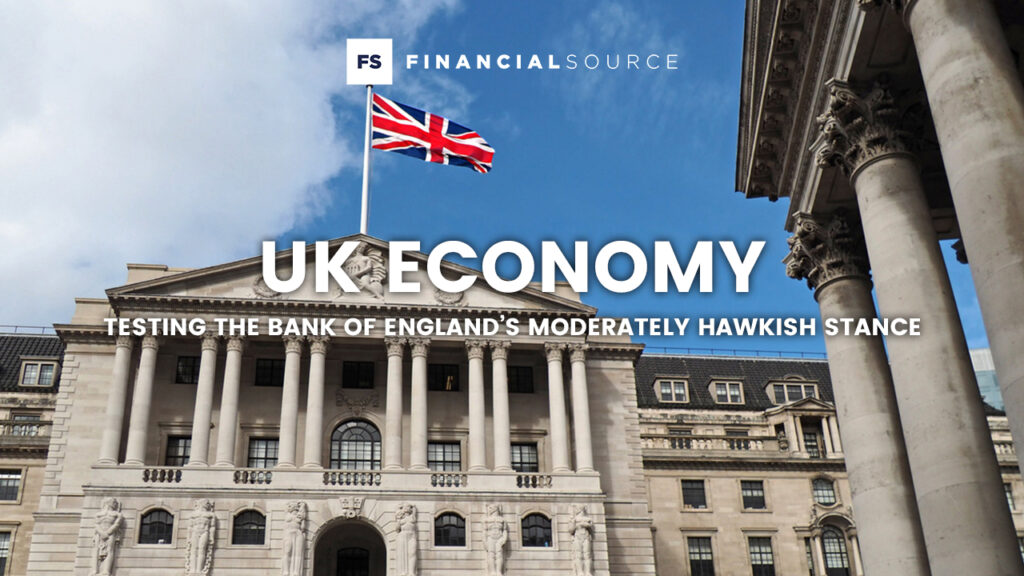UK Economy: Testing the Bank of England’s Moderately Hawkish Stance

Following last week’s quiet post-election and Fed decision period, attention shifts to the UK, where economic data releases could bring critical implications for the Bank of England’s policy path. The BoE’s recent 25 bps rate cut to 4.75% on November 7 came with an 8-1 vote—a slightly more cautious outcome than the market expected, as Mann dissented in favor of holding rates steady. This cut underscores a “gradual approach” to easing, aiming to bring inflation sustainably back to the 2% target while balancing growth concerns.
In the press conference, Governor Bailey emphasized that future rate cuts would proceed gradually, contingent on inflation trends, particularly in services prices. He noted that the BoE’s projections see inflation staying higher for longer, with upward revisions in forecasts for 2025. Growth forecasts, on the other hand, were revised down, reflecting the BoE’s expectation of slower economic activity in 2024. While Bailey refrained from explicitly defining the pace of cuts, he stressed that inflation risks remain, particularly within the services sector. His remarks signaled a “moderately hawkish” outlook, with caution embedded in the Bank’s policy trajectory.
Market Reactions and Forward Guidance
The market’s reaction to the rate cut was telling. GBP/USD saw a modest lift, while Gilt futures experienced a slight dip. The BoE’s forward guidance—emphasizing caution and the need for inflation to show sustained moderation—added a mildly hawkish tone to the decision, reflected in the Bank’s revised projections. The BoE now forecasts 2024 inflation at 2.25% (down from 2.75%) but adjusted 2025 upward to 2.75% (previously 2.25%), indicating prolonged inflationary pressures. Growth forecasts were lowered for 2024 to 1% from 1.25%, highlighting the Bank’s expectation of a slowing economy but acknowledging inflation’s persistence.
Data-Driven Path Ahead for GBP
Given this outlook, key UK economic data releases are in the spotlight. Any significant miss in the upcoming GDP, CPI, or labor data could pressure the BoE to adopt a more aggressive easing stance. The market is attuned to these prints as potential catalysts for GBP/USD volatility.
If we see a substantial downside surprise in data at 0700, including:
- UK GDP Estimate 3M/3M (Sep 2024): -0.1% or lower
- UK GDP Estimate MM (Sep 2024): 0.0% or lower
- UK Services MM (Sep 2024): 0.0% or lower
and other metrics falling short of expectations with prior figures unrevised or adjusted downward, expect GBP/USD sellers to step in at market.
This data will be critical in determining the BoE’s next move. Despite the BoE’s gradual easing narrative, weak data prints could accelerate rate cuts, particularly if economic signals point toward a deeper slowdown than projected.
BoE’s Balancing Act: Inflation, Growth, and Market Sentiment
The BoE’s recent actions reflect a balancing act. While inflation remains somewhat elevated, recent cuts suggest the Bank is keen to support growth. Yet, Bailey’s commentary and the BoE’s upward inflation revisions signal that the path back to 2% may be slower and more complex than initially anticipated, especially with services inflation still a concern. Thus, the BoE remains in a holding pattern, leaning on upcoming data to inform its next steps.
In Summary
The Bank of England’s cautiously hawkish stance has introduced a delicate equilibrium in the market, with inflation forecasts raised for 2025 despite a slowing growth trajectory. For traders, the message is clear: upcoming data releases are pivotal. If the numbers underscore a sluggish economy or sticky inflation, expect the BoE’s gradual path to come under scrutiny, and watch for volatility in GBP/USD as the market adjusts to evolving economic signals.